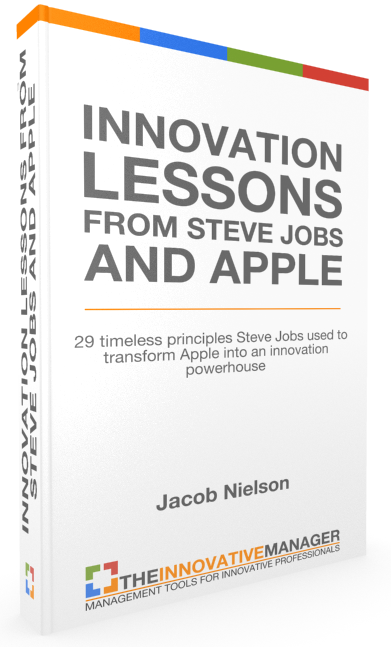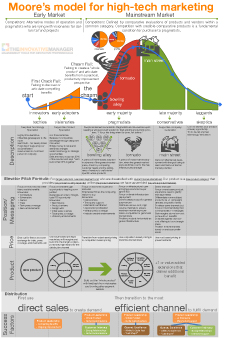Picture yourself understanding your customers pains so well that when you come up with an idea, it’s so good that your customers will beg you to build it and even pay you in advance for it. By the time you finish reading this article, you’ll have a clearer understanding of exactly who you are serving (your customer) and why deep down they are yearning for you to innovate them out of their predicamet.
It’s no secret that companies don’t always do a good job of anticipating what their customers need or want. History is littered with failed products and business ideas that went nowhere. But with jobs-to-be-done thinking and the correct understanding of your market, you can discover an endless fountain of opportunity.
It Starts With A Job To Be Done

FREE VIDEO TRAINING FOR INNOVATORS
Over 100 Slides Free and Downloadable as a PDF
Your customer has a job to do. And I don’t mean the 8-5 job they work at every day to pay the bills. The job I’m referring to is the specific task, goal or need your customer is trying to fulfill with your product. Your job is to help them get that job done better, faster, cheaper and/or in a more pleasant manner. It doesn’t matter if you’re a waitress in a restaurant or a research engineer for a manufacturing company, you need to help your customer get the job done.
For example, every day I go to work in the morning I “hire” my car to take me from my house to the office. It’s purpose is to help me get a very specific task done – get me from my house to work safely and in as pleasant a way as possible. That is my job to be done: to get me from my house to work and back.
Think of a job to be done as your fundamental need that is independent of how you get the job done. Over time, these needs rarely and sometimes never change. Even though how you get the job done can change frequently.
Just to further solidify this concept I’ll use another personal example – dental floss. Every day I have a job to be done when it comes to my teeth: clean them as thoroughly as possible so as to avoid cavities. Almost everyone has this job to be done on a daily basis (unless they have no teeth!). For me it takes two products to get this job done effectively:
- A toothbrush (with toothpaste)
- Dental floss
But the trouble is that I have a problem with dental floss. Sometimes I run out because my kids run away with it and decide to string it all over the house. Other times, even when I can find some, I don’t like using it because of how rough it can be on my gums. And I don’t like the way the floss can cut into my fingers and cause some discomfort when applying pressure. So for me, dental floss does get the job done but I’m far from happy with my experience.
Outcomes Are the Metrics Behind the Job to Be Done
Now we are starting to uncover the pain (both literal and figurative) I experience when using dental floss. Keep in mind that I don’t care how the job of cleaning my teeth gets done, I just care about getting it done in the fastest, cheapest and most pleasant way possible. Also note that with regard to how pleasant using dental floss is, I mentioned two specific things I don’t like:
- It is rough on my gums
- It makes my fingers hurt
This list is very helpful for innovation and market research because using jobs-to-be-done thinking, I can easily convert these statements into metrics that I use to evaluate how well a particular product is getting the job done for me. For example, from this list I can infer that I want to minimize the “roughness” (or pain) felt on my gums when cleaning my teeth. That’s metric one. I can also infer from the second item that I want to minimize the pain felt on my fingers. That’s metric two. In summary, here are two specific “outcomes” with regards to doing the job of cleaning my teeth:
- Minimize the pain felt on my gums
- Minimize the pain felt on my fingers
Notice that these statements are both in a very specific format. This is by design. If you don’t understand a problem exactly, you won’t understand exactly what the solution should be.
Specific Problems Have Specific Solutions
And general problems have no solutions. Think of world peace or world poverty. It’s really hard to solve those problems and that’s probably why they haven’t been solved. However, what if the problem was more specific such as “Prevent John and Frank from fighting at the family reunion.” That’s a problem that is much more manageable. And it’s a lot easier to think of specific solutions. Maybe you should just separate John and Frank. Or invite one but not the other. I think you get my point.
Use Outcomes to Understand Your Customers Specific Problems
According to Tony Ulwick, the father of “Outcome Driven Innovation,” there will typically be between 50-150 outcomes for each job to be done. In my teeth cleaning (the job) example we only discussed two outcomes – pain in my gums and pain in my fingers. There are several more that could be explored such as how long it takes to clean my teeth, how thorough my teeth are cleaned, how many cavities I get in a year, etc. All of these are possible metrics, or outcomes, that have to do with the job of cleaning my teeth.
Once you’ve discovered the job to be done and listed all the specific outcomes associated with each job, then you can know exactly what causes your customers pain and how to fix it. All you have to do at that point is come up with a solution that does better on the outcomes than their current solution and then you will know you’ve got a winner.
My solution to my dental floss issues – use a WaterPic!
Cheers,
Jake
Infographic

















